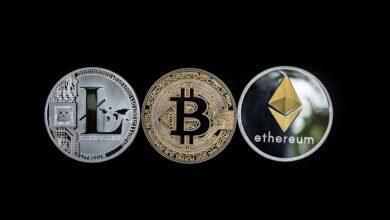DeFi’s Security Dilemmas – Risks in Open Finance

The emergence of decentralized finance (DeFi) marks a pivotal evolution in the landscape of financial ecosystems, reshaping traditional paradigms through blockchain-based technologies. As these open finance systems gain traction, they promise not only unprecedented accessibility and efficiency but also introduce a complex web of security challenges that warrant meticulous examination. The allure of DeFi lies in its potential to democratize financial services, eliminating intermediaries and empowering individuals, yet this very decentralization raises critical questions about security and vulnerability.
At the heart of blockchain-based finance lies a distributed architecture that seeks to enhance transparency and trust. However, the intricacies of these systems also present unique vulnerabilities that can be exploited by malicious actors. The myriad issues associated with security in DeFi are not merely technical; they encompass a broader spectrum of risks that could undermine the integrity of financial transactions. As participants navigate this new terrain, understanding the associated threats becomes paramount for safeguarding assets and maintaining confidence in these innovative platforms.
In exploring the landscape of decentralized finance, it is crucial to dissect the various layers of risk inherent in blockchain-based systems. From smart contract vulnerabilities to governance flaws, each facet contributes to a larger narrative about security in open finance ecosystems. The proliferation of distributed financial systems demands an ongoing dialogue among stakeholders–developers, investors, and regulators alike–to address these vulnerabilities comprehensively. Only through such collaboration can we hope to fortify the foundations of decentralized finance against the ever-evolving threats that loom on the horizon.
Understanding Decentralized Finance (DeFi)
Decentralized Finance (DeFi) represents a paradigm shift in the financial landscape, characterized by its open and distributed systems that operate on blockchain technology. By eliminating traditional intermediaries such as banks, DeFi platforms enable users to engage directly in financial transactions, lending, and trading activities. This transformation promotes accessibility and inclusivity, allowing individuals from various socio-economic backgrounds to gain access to financial services that were previously out of reach. However, while DeFi opens new avenues for innovation, it also introduces a plethora of security challenges that merit careful consideration.
The essence of decentralized finance lies in its reliance on blockchain-based systems, which provide transparency and immutability. Yet, these very attributes can lead to vulnerabilities within the ecosystem. Smart contracts–self-executing agreements coded into the blockchain–are a crucial component of DeFi systems. However, their complexity can result in coding errors or unforeseen exploits that malicious actors may leverage. These vulnerabilities highlight the need for rigorous auditing and testing processes to ensure that the financial products offered are secure and resilient against potential threats.
Distributed financial systems, despite their advantages, often grapple with inherent security risks. The decentralized nature of these platforms means that there is no central authority responsible for safeguarding user assets. In instances where security measures are insufficient, users may experience significant losses due to hacks or exploits. Notably, high-profile attacks on DeFi protocols have underscored the importance of understanding the associated risks involved in participating in this burgeoning sector. Users must navigate these risks with an awareness of potential pitfalls while maintaining a healthy skepticism towards the promises made by emerging platforms.
Moreover, the open finance ecosystems fostered by DeFi create a double-edged sword; they empower individuals but also attract bad actors seeking to exploit weaknesses. The anonymity afforded by blockchain transactions can facilitate fraudulent activities without accountability. As financial systems become increasingly interconnected through decentralized protocols, the potential for systemic risks grows–where failures in one protocol can lead to cascading effects across others. This interconnectedness necessitates a comprehensive framework for assessing security standards across various platforms to mitigate overall risk exposure.
The issues surrounding vulnerability in blockchain-based finance extend beyond mere technical flaws; they encompass regulatory challenges as well. Traditional regulatory frameworks often struggle to keep pace with innovations within DeFi, creating gray areas that can be exploited. The absence of clear regulations not only complicates compliance but also leaves users vulnerable to predatory practices or scams. Therefore, a collaborative effort between stakeholders–including developers, regulators, and users–is essential in establishing robust guidelines that protect participants while fostering innovation.
In conclusion, while decentralized finance heralds a new era of open and distributed financial systems with tremendous potential for democratizing access to finance, it is accompanied by significant security challenges and vulnerabilities. Awareness of these risks is paramount for users engaging with DeFi platforms. A proactive approach that involves thorough research, understanding associated threats, and advocating for improved security measures will be essential in navigating this complex landscape as it continues to evolve. The future of finance may well hinge on our ability to balance innovation with security in this dynamic environment.
Key Components of the DeFi Ecosystem
The decentralized finance (DeFi) ecosystem is a complex web of interconnected components that collectively challenge the traditional financial systems. At its core, this ecosystem is built upon blockchain technology, which enables transparency, security, and the elimination of intermediaries. Key components include smart contracts, decentralized applications (dApps), liquidity pools, and automated market makers (AMMs). Each element plays a vital role in facilitating financial transactions without relying on centralized authorities. The innovation behind DeFi lies in its ability to democratize access to financial services, allowing individuals to engage with their assets in a more open and efficient manner.
However, the very nature of open finance ecosystems brings with it a myriad of associated threats. The absence of regulatory oversight can lead to an environment ripe for exploitation. Malicious actors may target vulnerabilities within smart contracts or dApps, leading to significant financial losses for users. For instance, attacks such as flash loan exploits and oracle manipulation have highlighted the inherent risks associated with DeFi protocols. As these ecosystems expand, maintaining robust security measures becomes paramount to mitigate potential threats and protect user assets.
Blockchain-based finance offers a revolutionary approach to managing financial transactions, yet it is not immune to vulnerabilities. The decentralized architecture, while providing numerous benefits, can also expose systems to unique challenges. For example, consensus mechanisms that underpin blockchain networks can be susceptible to various attack vectors, including 51% attacks and Sybil attacks. Additionally, the immutability of blockchain records means that once a transaction is executed, it cannot be easily reversed. This characteristic poses risks when bugs or exploits are discovered after the fact, as users may find themselves unable to recover lost funds.
In exploring distributed financial systems, one must recognize the security risks that accompany their implementation. Unlike traditional systems that rely on centralized authorities for oversight and control, distributed systems operate on a peer-to-peer model. While this decentralization promotes resilience and reduces single points of failure, it also complicates accountability. The lack of an intermediary means that users must place their trust in code rather than human oversight. Consequently, any flaws in the underlying code can lead to catastrophic failures, exposing users to significant financial risks.
Moreover, the increasing sophistication of cyber threats poses an ongoing challenge for DeFi platforms. As these ecosystems attract more participants and capital, they inevitably become prime targets for hackers looking to exploit weaknesses in smart contracts or infrastructure. Security audits are essential; however, they can only mitigate risks to a certain extent. The evolving landscape of threats necessitates continuous monitoring and adaptation of security protocols to safeguard user interests effectively.
Ultimately, the DeFi ecosystem represents both an opportunity and a challenge for the future of finance. By embracing decentralized principles and leveraging blockchain technology, we can create more inclusive financial systems. However, this innovation comes hand-in-hand with vulnerability issues that must be addressed through proactive risk management strategies. As we navigate this uncharted territory, it is crucial to remain vigilant about the associated security risks while striving for greater transparency and user empowerment within decentralized finance.
Common Security Risks in DeFi
Decentralized Finance (DeFi) is an exhilarating frontier of blockchain-based finance, but with its rapid growth comes an array of security risks that demand our attention. The very architecture of DeFi systems, designed to eliminate intermediaries and empower users directly, exposes them to vulnerabilities that traditional financial systems have long guarded against. Smart contracts, for instance, are the backbone of many DeFi applications; however, they are susceptible to coding errors and exploits. A single flaw in a smart contract can lead to significant financial losses, as seen in high-profile hacks where millions of dollars were siphoned from decentralized exchanges.
The nature of blockchain technology itself introduces additional layers of complexity and associated issues. While the distributed ledger provides transparency and traceability, it also makes it easier for threat actors to launch coordinated attacks on network participants. One prevalent issue in the ecosystem is the risk of front-running, wherein malicious actors exploit transaction data visibility before it is confirmed on the blockchain. This manipulation undermines trust in the system and raises questions about the integrity of decentralized markets. Furthermore, the immutability of blockchain can be a double-edged sword; once a transaction is executed, reversing it becomes nearly impossible without consensus from all stakeholders.
In open finance ecosystems, where various platforms and protocols interact seamlessly, the potential for interconnected vulnerabilities increases significantly. These ecosystems often rely on third-party integrations and oracles to function effectively. An attack on one component can cascade through the network, affecting multiple services simultaneously. For example, if an oracle providing external data is compromised, it could mislead numerous DeFi applications that depend on accurate information for pricing or collateralization. The challenge lies not only in securing individual components but also in ensuring that their interactions do not create unforeseen risks.
Ultimately, distributed financial systems must navigate a complex landscape of security threats while maintaining their core principles of decentralization and accessibility. As DeFi continues to evolve, so too must our strategies for mitigating risks. Employing rigorous audits, implementing robust governance frameworks, and fostering community engagement are essential steps in building resilient systems. It is imperative that all stakeholders–developers, investors, and users–remain vigilant and proactive in addressing these vulnerabilities to harness the true potential of decentralized finance without succumbing to its inherent dangers.
Mitigating Security Challenges in DeFi
The rise of decentralized finance (DeFi) has ushered in a transformative era for financial ecosystems, characterized by open and distributed systems that promise democratization of financial services. However, with this promise comes a myriad of security challenges. The very nature of blockchain-based finance introduces vulnerabilities that are not present in traditional financial systems. These vulnerabilities can stem from smart contract bugs, oracle failures, and phishing attacks, among other issues. To effectively mitigate these security challenges, stakeholders must adopt a proactive approach that encompasses risk assessment, robust auditing practices, and continuous monitoring of their systems.
One of the most pressing threats in DeFi is the lack of regulation and oversight, which can lead to the proliferation of malicious activities within these open finance ecosystems. Decentralized platforms often attract users with high-yield promises, but they also become breeding grounds for scams and exploits. For instance, the infamous “rug pull” phenomenon demonstrates how developers can create seemingly legitimate projects only to abscond with investors’ funds shortly after launch. To counteract such risks, community-driven initiatives focusing on education and awareness are essential. Users must be equipped with knowledge about potential threats and best practices for safeguarding their assets.
Blockchain technology underpins the decentralized architecture of these financial systems, yet its inherent characteristics can also contribute to security vulnerabilities. The immutability of blockchain records means that once a transaction is confirmed, it cannot be altered–this is a double-edged sword. While it ensures transparency and trustlessness, it also means that any exploit or error becomes permanent unless significant measures are taken to rectify it. Therefore, implementing rigorous testing protocols and employing formal verification methods during the development phase can significantly reduce the likelihood of introducing flaws into smart contracts.
Moreover, as DeFi platforms increasingly rely on automated processes through smart contracts, the associated risks magnify. Automated systems are susceptible to unforeseen interactions between contracts that can trigger unintended consequences. For example, poorly designed liquidity pools might face sudden collapses if market conditions fluctuate dramatically. To address these systemic risks, developers should consider building in fail-safes and contingency measures that can respond to adverse events dynamically, allowing for greater resilience in the face of volatility.
In addition to technical solutions, fostering collaboration within the DeFi community plays a pivotal role in enhancing overall security. By sharing information about vulnerabilities and threats, projects can collectively improve their defenses against attacks. Initiatives like bug bounty programs encourage ethical hackers to identify weaknesses before malicious actors exploit them. This collaborative ethos not only fortifies individual platforms but also strengthens the entire ecosystem against external threats.
In conclusion, while decentralized finance presents remarkable opportunities for innovation in finance, its security challenges cannot be overlooked. The combination of distributed systems with open access creates an environment rife with vulnerabilities that necessitate comprehensive strategies for mitigation. By acknowledging the associated risks and actively working towards addressing them through education, collaboration, and robust technological measures, participants in the DeFi landscape can help foster a more secure and resilient financial future.





